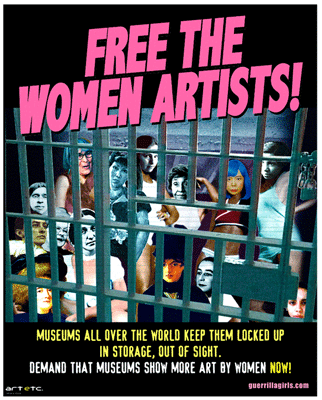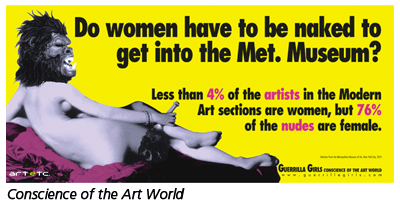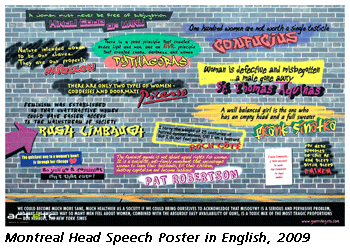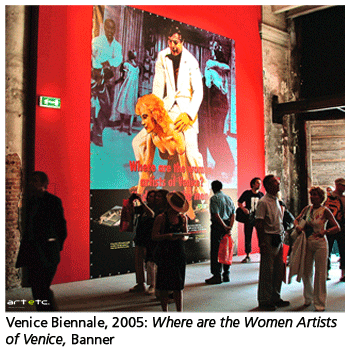- Publisher's Note
- Editorial
- Guerrilla Girls: The Masked Culture Jammers of the Art World
- Creating for Change: Creative Transformations in Willie Bester’s Art
- Radioactivists -The Mass Protest Through the Lens
- Broot Force
- Reza Aramesh: Action X, Denouncing!
- Revisiting Art Against Terrorism
- Outlining the Language of Dissent
- In the Summer of 1947
- Mapping the Conscience...
- 40s and Now: The Legacy of Protest in the Art of Bengal
- Two Poems
- The 'Best' Beast
- May 1968
- Transgressive Art as a Form of Protest
- Protest Art in China
- Provoke and Provoked: Ai Weiwei
- Personalities and Protest Art
- Occupy, Decolonize, Liberate, Unoccupy: Day 187
- Art Cries Out: The Website and Implications of Protest Art Across the World
- Reflections in the Magic Mirror: Andy Warhol and the American Dream
- Helmut Herzfeld: Photomontage Speaking the Language of Protests!
- When Protest Erupts into Imagery
- Ramkinkar Baij: An Indian Modernist from Bengal Revisited
- Searching and Finding Newer Frontiers
- Violence-Double Spread: From Private to the Public to the 'Life Systems'
- The Virasat-e-Khalsa: An Experiential Space
- Emile Gallé and Art Nouveau Glass
- Lekha Poddar: The Lady of the Arts
- CrossOver: Indo-Bangladesh Artists' Residency & Exhibition
- Interpreting Tagore
- Fu Baoshi Retrospective at The Metropolitan Museum of Art
- Random Strokes
- Sense and Sensibility
- Dragons Versus Snow Leopards
- What Happened and What's Forthcoming
- Art Events Kolkata, February – March 2012
- Mumbai Art Sighting
- Art Bengaluru
- Delhi Dias
- Musings from Chennai
- Preview, March, 2012 – April, 2012
- In the News, March 2012
- Cover
ART news & views
Guerrilla Girls: The Masked Culture Jammers of the Art World
Issue No: 27 Month: 4 Year: 2012
Dr Saba Gulraiz in conversation with the Guerrilla Girls
 Guerrilla Girls is a group of female protest artists fighting racial and gender based inequalities in the western art world. The group was formed in 1985 in the New York City by some anonymous artists who are known by their assumed names of the most acclaimed female artists like Frida Kahlo, Kathe Kollwitz, Alma Thomas, Julia de Borgos, Rosalba Carriera etc. To expose and appropriate prejudices and art world politics, they combine both facts and humour to their art. Through provocative witty statements supported by statistical data, they unmask the hypocrisies and dominance of the white men in museums, art galleries, and Hollywood, the places where women and artists of colour always remain at the periphery. Their guerrilla operations include protest actions, billboards, letter writing campaigns, posters, bus ads, lectures and publication of books. They challenge and target all those who play the politics of discrimination by protesting outside art galleries and museums in their ferocious looking guerrilla masks. Here, in this interview, Guerrilla Girls talk about how in their very own guerrilla ways they are combating and subverting the man's world.
Guerrilla Girls is a group of female protest artists fighting racial and gender based inequalities in the western art world. The group was formed in 1985 in the New York City by some anonymous artists who are known by their assumed names of the most acclaimed female artists like Frida Kahlo, Kathe Kollwitz, Alma Thomas, Julia de Borgos, Rosalba Carriera etc. To expose and appropriate prejudices and art world politics, they combine both facts and humour to their art. Through provocative witty statements supported by statistical data, they unmask the hypocrisies and dominance of the white men in museums, art galleries, and Hollywood, the places where women and artists of colour always remain at the periphery. Their guerrilla operations include protest actions, billboards, letter writing campaigns, posters, bus ads, lectures and publication of books. They challenge and target all those who play the politics of discrimination by protesting outside art galleries and museums in their ferocious looking guerrilla masks. Here, in this interview, Guerrilla Girls talk about how in their very own guerrilla ways they are combating and subverting the man's world.
 Saba Gulraiz: For the new readers, let's begin with the same 'ancient history' of formation of 'Guerrilla Girls' and its unique way of protesting discrimination.
Saba Gulraiz: For the new readers, let's begin with the same 'ancient history' of formation of 'Guerrilla Girls' and its unique way of protesting discrimination.
Guerrilla Girls: Twenty-seven years ago, we got the idea to put up a couple of posters on the streets of New York City about the state of women artists in the New York Art world. It wasn't a pretty picture. But we had a new idea about how to construct political art to twist an issue around and present it in a way that hadn't been seen before. The Guerrilla Girls were born: an anonymous group of artists who wear gorilla masks in public and take the names of dead women artists as pseudonyms. Who knew that our work would cause all hell to break loose? Who knew it would cause a crisis of conscience about diversity in the art world, something museums, collectors and critics had denied for a long time. Now, it's a no brainer.... you can't tell the story of a culture without all the voices in it.
SG: What are the issues you dig into, to expose to the world?
GG: We expose sexism, racism and corruption in politics, art, film and pop culture, using facts, humour and outrageous visuals. We reveal the understory, the subtext, the overlooked, and the downright unfair. We are not systematic. We don't put something out there unless we think it has a chance to be unforgettable and to change some people's minds about an issue.
SG: Why are anonymity and animality important for you?
GG: Sometimes you gotta speak out publicly, but sometimes it works even better to speak out anonymously. This has its disadvantages, like working your whole life without getting any credit, but it has lots of advantages, too. Our anonymity, for example, keeps the focus on the issues, and away from our personalities. Plus…you won't believe what comes out of your mouth while wearing a gorilla mask!


The masks came about by accident. Our first posters caused all hell to break loose and reporters wanted to talk to us. As an anonymous group, we needed a disguise. One of our early members misspelled guerrilla as gorilla and we have worn gorilla masks ever since.
SG: What are your Guerrilla tactics to fight the prejudices against women artists and artists of colour? What is your logic and rhetoric? Humour is your main weapon to fight the serious issue of sexism and racism, but it has its own dangers in case the audiences fail to look seriously behind this mask of humour. How do you overcome this danger?
 GG: Political art or activism that points to something and says, “This is bad” is preaching to the choir. We think humour helps us fly under the radar. If you can get people who disagree with you to laugh at an issue, you have a hook right into their brain. Once inside, there's a much better chance to convert them.
GG: Political art or activism that points to something and says, “This is bad” is preaching to the choir. We think humour helps us fly under the radar. If you can get people who disagree with you to laugh at an issue, you have a hook right into their brain. Once inside, there's a much better chance to convert them.
SG: You have come a long way, more than 25 years now when your group was formed. Over the years, how have things changed in the women representation and contribution to the art world?
GG: At the entry level things are better for women and people of colour in the U.S. art world than ever before. But there is still a crushing glass ceiling, and most museums of modern and contemporary art still have less than 15% women in their collections.
SG: How would you redefine the term 'feminism' in your own Guerrilla way? Are you comfortable attaching this outdated label with your mission?
 GG: We think everyone should use the 'F' word Feminism. It's crazy that so many people who believe in the tenets of feminism human rights including education for women worldwide, reproductive rights, freedom from sexual abuse and exploitation still stop short of calling themselves feminists. Civil rights, women's rights, lesbian, gay and trans rights are the great human rights movements of our time. Feminism doesn't get the respect it deserves, but it's changed the world, revolutionized human thought and given many women lives their great grandmothers could never have imagined. Even the most repressive nations in the worlds have feminists, bravely speaking up or quietly working for women.
GG: We think everyone should use the 'F' word Feminism. It's crazy that so many people who believe in the tenets of feminism human rights including education for women worldwide, reproductive rights, freedom from sexual abuse and exploitation still stop short of calling themselves feminists. Civil rights, women's rights, lesbian, gay and trans rights are the great human rights movements of our time. Feminism doesn't get the respect it deserves, but it's changed the world, revolutionized human thought and given many women lives their great grandmothers could never have imagined. Even the most repressive nations in the worlds have feminists, bravely speaking up or quietly working for women.
SG: As women and also as established artists, (as many of you are) how do you reconcile your real life with the guerrilla life?
GG: It's not easy for each of us to be two artists in one body. Often our Guerrilla Girls life takes over the rest of our life, but it's worth it. We feel lucky to be able to do the Guerrilla Girls' work as well as our own.
SG: Any incidence during your consciousness-raising campaign that landed you in trouble?
GG: Putting up street posters is illegal, so sometimes we get chased. We've never been caught. Not yet, anyway.
SG: You support your protest with statistical data to expose the art world politics. How do you do all this?
GG: You'd be amazed at how much information institutions museums put on their websites. We also have people inside museums help us gather statistics. In the worlds of film and politics there are many published studies that give us the numbers we need. We don't do general research. The idea comes first, and then we look for statistics to back it up.
SG: Are you a large group? How do you organize your actions?
GG: We're not a large group and never have been. Over 50 women have come in and out of the group over the years, some for a week, some for a decade, but we've always been small at any one time. You cannot do the kind of work we do posters, billboards, books, street actions and workshops -- with a large group.
SG: What are different responses you receive at different places of the world? What are your success stories?
GG: Thousands of people all over the world -- aged 8 to 80 write us each year and say they use us as a model for doing their own crazy, creative kind of activism. We've done talks, performances, projects and workshops in countless countries, where we hear people's stories and tell them ours. We haven't had any disastrous experiences yet. By the way, we'd love to visit India some day.
SG: Don't you think calling yourself 'Conscience of the Art World,' is an overstatement?
GG: Exactly! It's meant to be outrageously braggy. But it is what we do, as well.
SG: You also call yourself 'Professional Complainers' but both, your appearance in a guerrilla mask and your statements are quite ferocious, so I would like to call it a guerrilla war than a complaint. Do you agree?
GG: No. We may look ferocious and ferociously speak up on the issues, but our weapons are facts, humour and fake fur. We're guerrilla artists and culture jammers, not a guerrilla army.
SG: Lastly, a word on the feminist future.
GG: We believe that the world will continue slowly, slowly inching towards more rights for woman and people of colour, and lesbian, gay and trans people. But everyone has to speak up about the issues they care about. There's a long way to go.